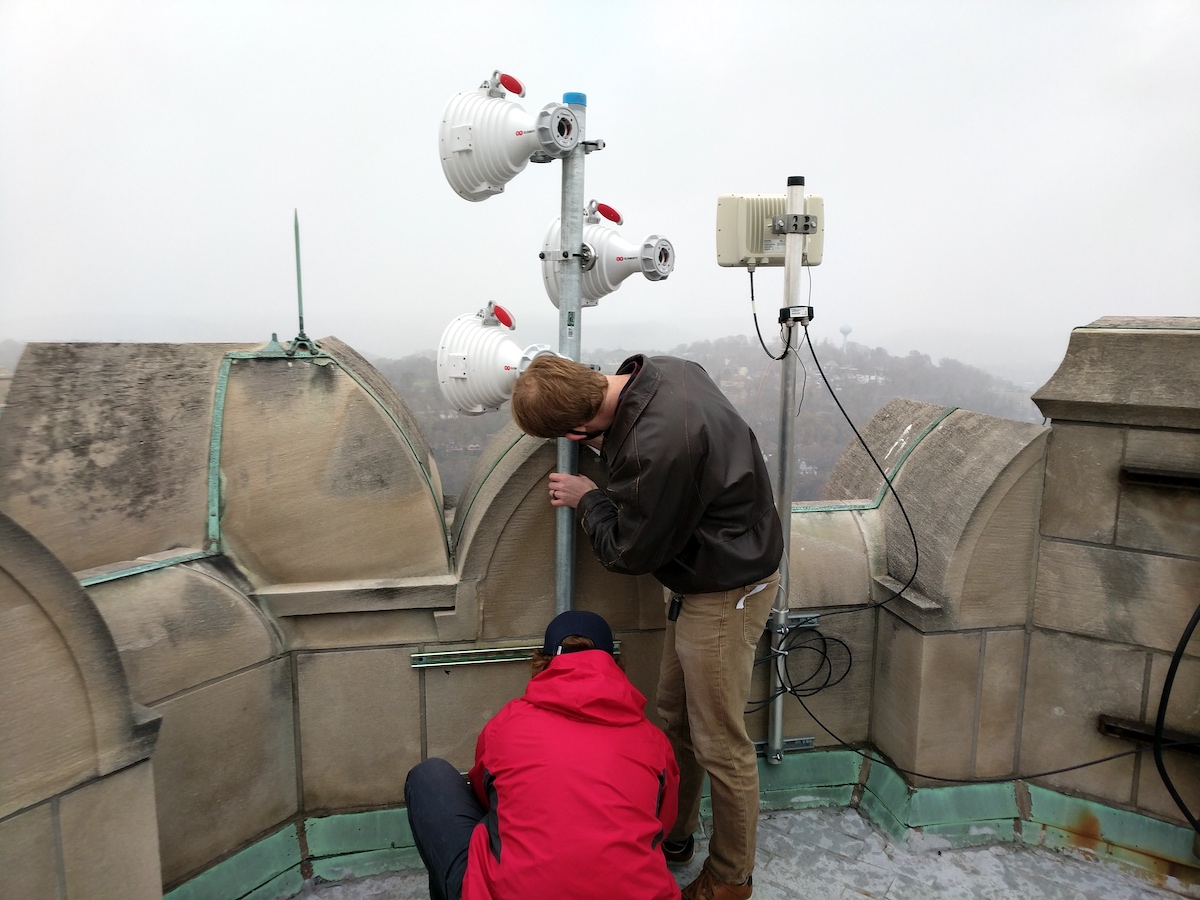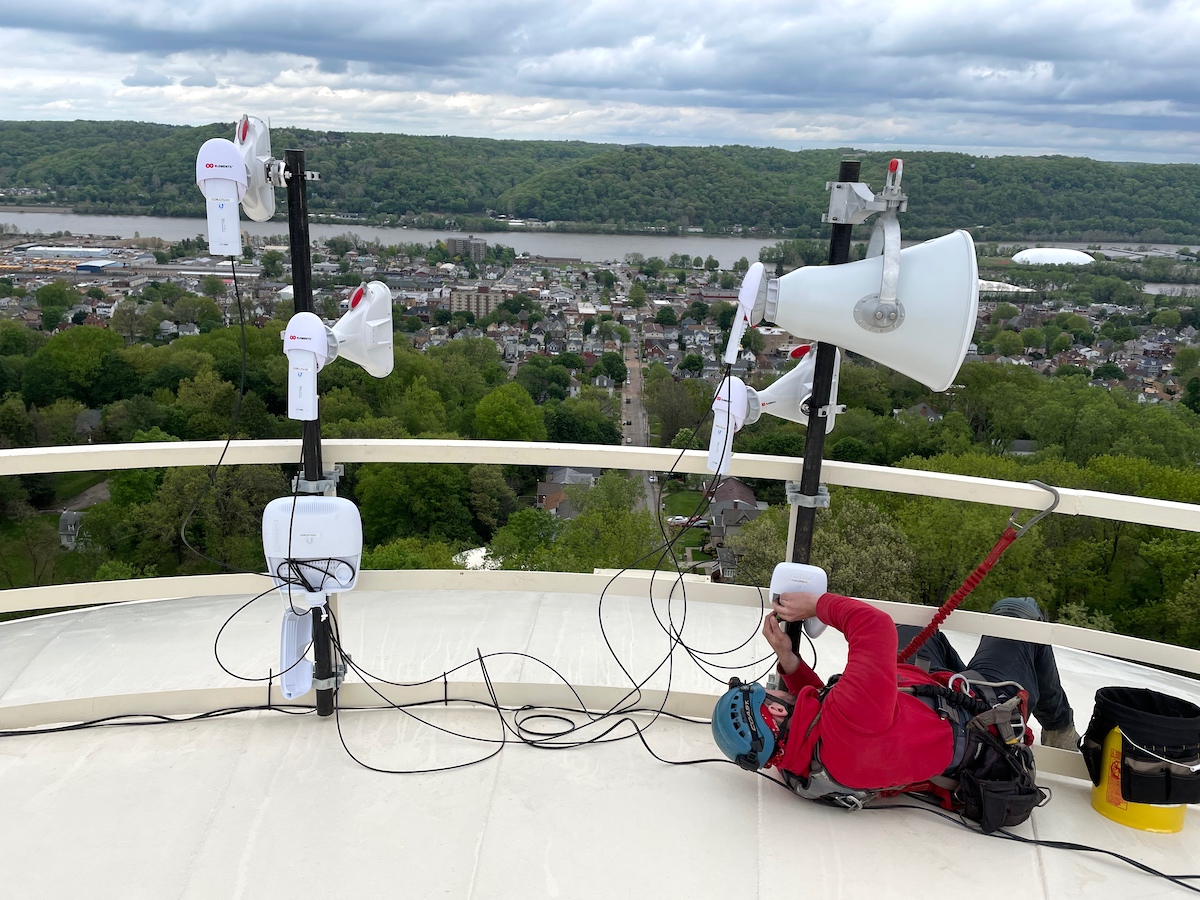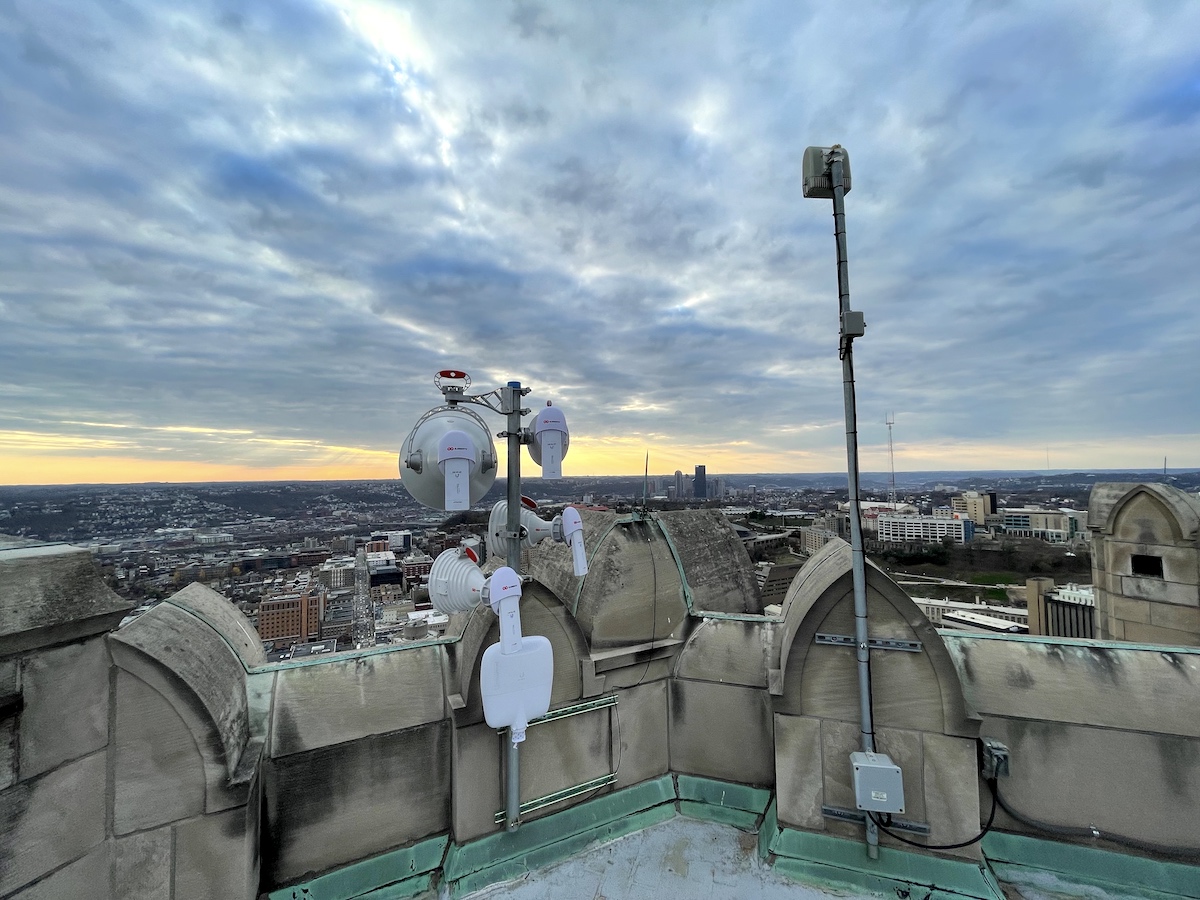The issue of equitable and widespread internet access is one that came to the forefront during the pandemic, leaving students, remote workers and local governments desperate for a way to bring daily life online for more people.
Like other companies and organizations across the country, Allentown-based nonprofit Meta Mesh Wireless Communities (MMWC) saw a new opportunity for technology that could increase internet access during the pandemic and beyond.
“Suddenly there was this market that didn’t really exist before, where money needed to be spent on solving this issue,” said Sam Garfinkel, the nonprofit’s interim executive director.
In Pittsburgh, around 30% of residents didn’t have home access to the internet as of 2018. With new urgency to find a solution, the 2015-founded MMWC pivoted from its original mesh network technology to development of a wireless internet service provider, or WISP. Using high-powered long-distance Wi-Fi radios, MMWC transmits bandwidth originating from their hub at the top of the University of Pittsburgh’s Cathedral of Learning in Oakland to what Garfinkel calls repeater or relay towers in target neighborhoods. Those relay towers then connect to receivers installed at participating residences, and those receivers finally connect to an in-home router, allowing those who live there to access the internet.
WISP technology isn’t new. Around for almost three decades now, there are now nearly 3,000 providers in the United States. These businesses tend to be much smaller than the big-name internet providers, and are supported by the communities they’re providing internet for, allowing them to focus more on the last-mile gap in telecommunications than larger companies can.

The kind of infrastructure that MMWC and other WISP companies provide is typically a cheaper option for internet access in rural areas, Garfinkel said, or any place where cable-based broadband is deemed too costly.
“Because it’s expensive to lay fiber, and can take years to build out,” she said, “if you don’t have a big client base in the area, there’s not a lot of incentive for incumbent fiber providers to undertake those costs.” And even when those options are available, they can be pricy for end users.
That’s why MMWC offers its technology at no cost to end users through its Every1online initiative. Residents in target neighborhoods who choose to participate get the receiver, router and ethernet cables provided and set up for them.
That doesn’t mean installing and maintaining the different components of the WISP is free, but that the costs are instead covered by grant funding, corporate sponsorships or contracts with local organizations like school districts.
“Groups like that now have funding allocated for solving this problem, which was not always true,” Garfinkel said. Right now, she estimates the cost to be around $200 upfront per household, plus a $38 monthly fee.
The lower price of WISP does come with a few tradeoffs. Estimated download speeds are about 50 Mbps, while upload speeds are around 25 Mbps. Those speeds surpass the FCC requirements for broadband, but are still lower than those offered by most telecom-provided internet. But, Garfinkel pointed out, “that should be enough to have concurrent device usage and do things like multiple video calls or streaming services easily.” It’s also similar to what’s now offered by Comcast’s Internet Essentials program for low-income customers, for instance.
Right now, MMWC operates its main hub at the Cathedral of Learning with relay towers in Homewood and Coraopolis, as well as another being built on a Crown Castle-owned tower in New Kensington. All of this has been part of MMWC’s plan to establish its baseline infrastructure as it moves from the proof of concept phase to the early adopters, which Garfinkel said will likely start with the communities they’re already serving.
The org plans to bring 100 homes online via its technology over the summer.

So far, MMWC has established partnerships with the University of Pittsburgh, Carnegie Mellon University, Keystone Initiative for Network Based Education and Research and three school districts within their current target neighborhoods to complete the Every1online initiative. It’s also expanded its board of directors during the pandemic, including the addition of CMU VP for Information Technology and CIO Stan Waddell and Pitt Vice Chancellor and CIO Mark Henderson. Garfinkel hopes that these new additions will help MMWC find new pathways for future funding and develop relationships with new target neighborhoods as the nonprofit continues to expand its infrastructure.
Beyond moving towards new contracts and sources of funding to support those first users, MMWC will also expand its team of network engineers and administrative roles this year. In addition to expanding their infrastructure, Garfinkel noted that another focus will be outreach to those early adopters and community members with a vested interest in equitable internet access.







